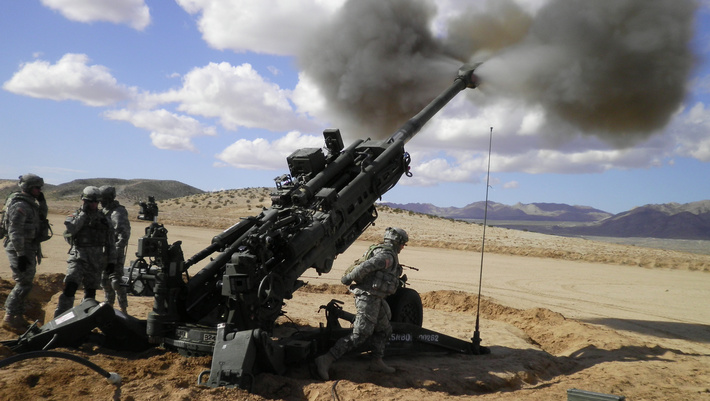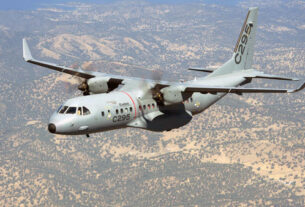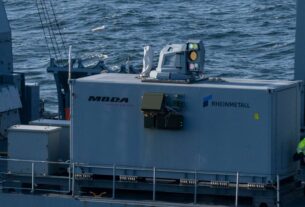Artillery for Indian Army
India is in the process of redesigning its Artillery Corps’ requirements to meet a “two-and-a-half front” war scenario the fulcrum of which will lie in the high Himalayas. The “two-and-a- half” has become a descriptive of the new hybrid warfare expected to be unleashed against India by China and Pakistan and their hordes of jihadi terrorists with Kashmir and Arunachal Pradesh as the focal points. There will have to be a clear assessment of the kinetic capacities in the hands of Indian soldiers who will, apart from dealing with the enemies, have to contend with the ruggedness of the terrain and the vicissitudes of the weather conditions.
For many years Indian artillery was in limbo after the Bofors scam but periodic upgradations and cannibalization of the Bofors howitzers helped keep the Army operational as was proved during the Kargil war of 1999. Since then the dusting out of the drawings and blueprints of the original Swedish technology and the creation of prototypes based on these designs has raised the possibility that India will soon have enough indigenously produced 155 mm caliber howitzers to deal with most threats in the Himalayas.
Getting an edge
A new Mountain Strike Corps for the Arunachal Pradesh sector is being raised. Given the nature of its responsibilities it is to be expected that adequate firepower is made available to it to execute its role with any measure of efficiency. Providing weapons is as important as providing the means of transportation in the high mountain terrain that is Arunachal. The objective is to hold the Chinese and prevent any large-scale intrusion as happened in 1962. For this, a set of long-range artillery that will be able to create killing zones along the flatlands north of the Himalayan foothills to break up all Chinese attempts at troop concentrations well before it can happen is a minimum requirement.
To be able to dominate and disrupt the forward edge of battle all along the 4056 km of the India-China Line of Actual Control from Arunachal Pradesh in the east to Jammu and Kashmir in the west across five States, the Indian Army will have to construct a viable network of “artillery nests” in keeping with the concept of shoot and scoot to protect own assets.
India has effectively used the Bofors 155mm guns capable of hitting targets at up to 42 km during the Kargil invasion of 1999. In combination with the 214 mm caliber Pinaka multi-barrel rocket launch system and support from the Indian Air Force, India was able to neutralize the invasion executed by the Pakistan Army Inter Services Intelligence (immediately after its series of nuclear weapons tests in Balochistan). The intention clearly was to grab Indian territory from behind the newly acquired nuclear shield. It discovered to its dismay that there was space below the nuclear threshold that could be exploited with conventional weaponry as India did very effectively.
The forward edge of battle in the Himalayas lies in the flatlands north of the Himalayan range in Tibet. It is there that the Indian Armed Forces will have to stop the massing of Chinese troops that should be expected to be deployed to be able to demonstrate its boast of being able to “drive into Delhi in 48 hours”.
The Chinese are already deployed on the Himalayan crest line as in Nathu La in Sikkim and the Chumbi Valley which is like a dagger between Sikkim and Bhutan and threatens the narrow Indian lifeline known as the Siliguri corridor between Nepal and Bangladesh. The likely use of Nepali and Bhutani territory against India by a rampant China will also now have to be factored into Indian defensive calculations.
The situation demands deployment of artillery, especially high trajectory weapons like the Bofors howitzer to be able to disrupt those segments through which the Chinese are likely to effect a massive “roll-down” into West Bengal and Assam. This manoeuvre could effectively cut off Arunachal Pradesh from the rest of India. In Kargil the “direct fire mode”-instead of lobbing shells in a high trajectory the weapon was fired in a straight line between the weapon and the target-was found to be more effective. What tactics should be used in an emerging situation are peacetime exercises. India needs to ensure that unlike as in Kargil it will not have to learn lessons as it goes along. The consequential elongation of the hostilities could be detrimental to Indian territorial integrity.
Current assets
After the Prithvi series 1 and II missiles with ranges of between 150 and 350 km with 500 kg or 1000 kg warheads, the Indian Army has fielded the Russian Smerch 300 mm multibarrel rocket launch system. With seven different types of warheads ranging from anti-personnel and anti-tank cluster munitions to high explosive warheads are more relevant to the Himalayan situations. It also gives flexibility of deployment where transportation links are deficient.
The Indian indigenous project Pinaka multi-barrel rocket launch system which earned laurels during the Kargil war has had its range improved to cover a distance of 65 km. The effort is focused on creating a weapon system better in some respects than the Russian Smerch. The Russians had refused to provide the technology transfer for indigenous production.
With the resurrection of the Bofors 155mm howitzer design by the Ordnance Factories Board and the signing of the government-to-government agreement with the US, the Indian Army is assured of the acquisition of both the towed and the self-propelled versions of the improved Bofors and the ultralight 155mm howitzers bought specifically for mountain warfare. The Dhanush has been created as per the drawing supplied by the Swedish firm. The length of the barrel is as the original-45 calibres long. However, as part of product improvement within the Advanced Towed Artillery Gun Systems the range of the next generation howitzers is to be improved by lengthening the gun-barrel from the 45 calibre to the 52-calibre category thereby enabling it to hit target at a distance of 60 km.
As part of its attempt to promote public-private participation in defence sector, the Defence Research and Development Organisation has mobilized several Indian private companies to develop a tracked self-propelled 155 mm howitzer with a 52 calibre barrel with foreign collaboration. It has resulted in the Indian Larsen and Toubro and a South Korean firm bagging a contract to provide 100 self-propelled tracked weapons within the next 48 months.
As part of its upgradation of artillery the DRDO has been converting the Russian 130 mm field guns to 155 mm caliber with the help of the Israelis. However, the blacklisting of the Soltam company for alleged violation of contract rule has been a setback.
It would be interesting to see what the DRDO produces to deal with that “half” war that the Ministry of Defence expects China and Pakistan to employ against India-the jihadi terrorists operating behind Indian lines, particularly in Jammu and Kashmir. Conventionally, the rocket-propelled grenade has been the weapon of choice for both the terrorists and the security forces. India needs to become airborne for quick reconnaissance, identification and engagement of terrorists operating in the densely forested and mountainous terrain that is the Himalaya. An expendable drone aircraft can be converted to a gunship armed with a lighter version of rockets.
Now that the artillery department has been mobilized and is quickly gaining momentum, innovative applications should be encouraged within the PPP framework.




